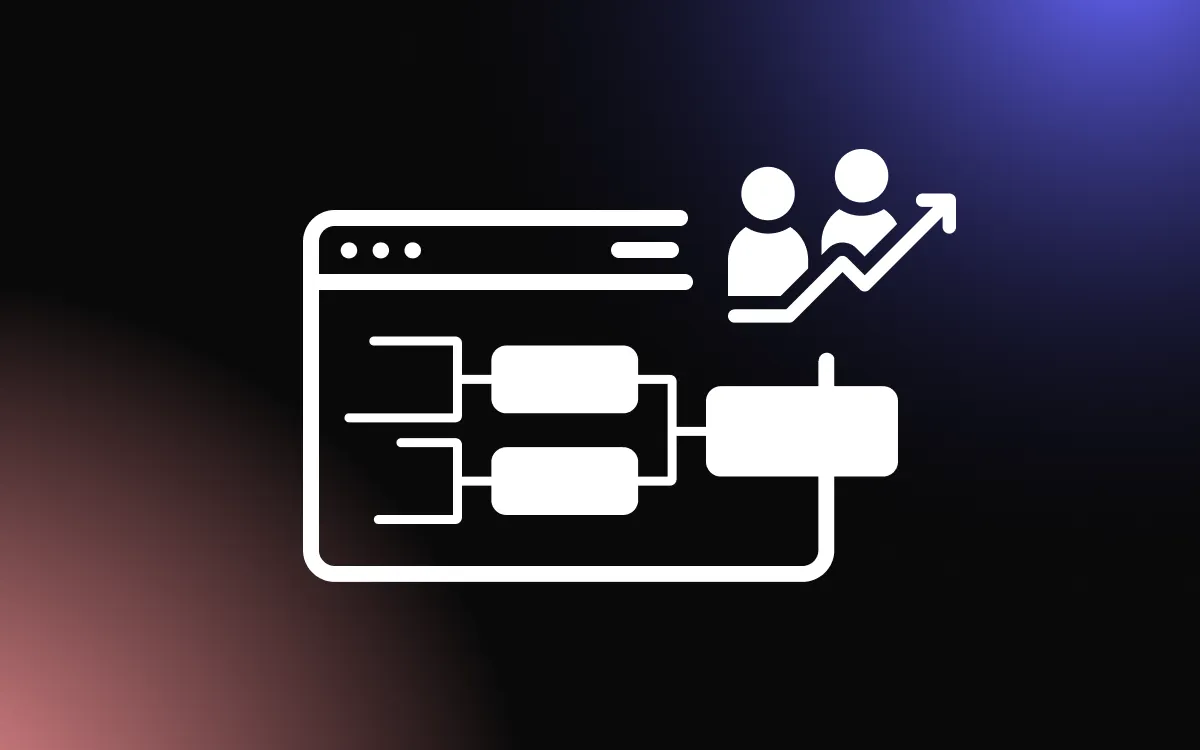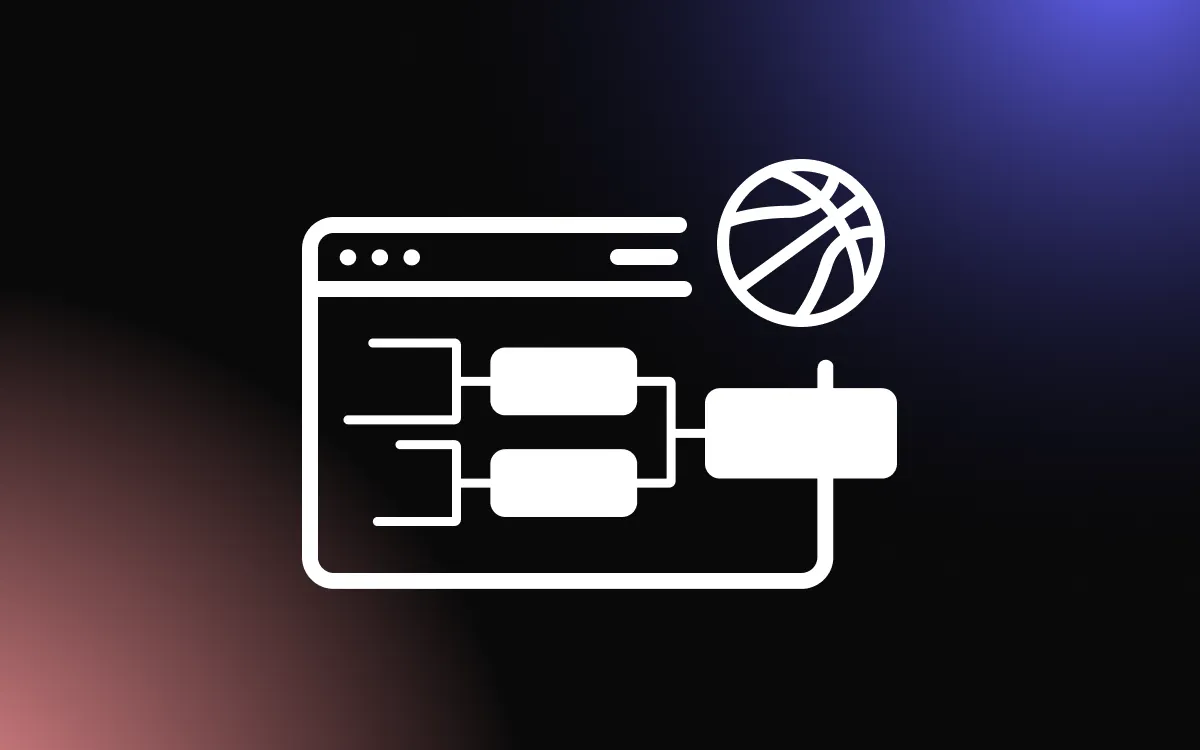
The design of tournament brackets has undergone a significant evolution, mirroring the changes in technology, user experience demands, and the expanding scope of competitive events. From simple hand-drawn charts to sophisticated digital platforms, bracket design has transformed to accommodate a wide range of sports, esports, and even pop culture events.
This article traces the journey of bracket design from its humble beginnings to its current state, and speculates on future trends and innovations. We'll explore how changes in design have impacted the way tournaments are organized, followed, and enjoyed by audiences worldwide.
The Origins and Early History of Bracket Design
The concept of brackets, a cornerstone in organizing competitive events, has a rich history that traces back to the early days of organized sports and competitions. Understanding the inception and evolution of bracket design offers insight into how this simple yet effective tool has shaped the way we view and manage competitions.
The Inception of Brackets in Competitive Events
- Roots in Tournament Organization: The use of brackets originated from the need to structure tournaments, particularly in sports like tennis and boxing. Their early use was pivotal in managing and visualizing the progression of competitors through various stages of a tournament.
- Medieval Tournaments: Some of the earliest forms of brackets can be traced back to medieval jousting tournaments, where knights were paired off in a systematic way to determine a champion.
Early Formats and Their Influence on Modern Design
- Simplistic Structures: Initially, brackets were rudimentary, focusing solely on pairing competitors and determining the next round's matchups. These early designs laid the foundation for the more complex bracket systems we see today.
- Evolution with Sports Popularity: As sports like tennis and boxing gained popularity, the bracket system evolved to accommodate larger numbers of participants and more complex tournament structures.
- Influence on Modern Brackets: These early formats influenced the development of various bracket types, including single-elimination and double-elimination formats. The fundamental principles established in these early designs continue to influence modern bracket structures in sports, gaming, and other competitive fields.
The Development of Brackets in Sports
Brackets have played a pivotal role in the evolution of sports tournaments, transforming how competitions are organized, followed, and enjoyed. Over the years, major sports tournaments have seen significant developments in bracketology, incorporating innovations that have enhanced both the competitive structure and the spectator experience.
Evolution in Major Sports Tournaments
- Early Adaptations: Initially, brackets in sports like tennis and boxing were straightforward, focusing on single-elimination formats. This method was effective for its simplicity and ease of understanding.
- Expansion and Complexity: As tournaments grew in size and popularity, bracket systems evolved to accommodate more participants and complex structures. This led to the development of double-elimination brackets, providing a second chance for competitors and adding an extra layer of excitement for fans.
- Global Sporting Events: In global events like the FIFA World Cup and the Olympics, bracket systems have been crucial in managing international competitions. These events have further popularized and standardized the use of brackets in sports.
Innovations in Sports Bracketology
- Seeding Systems: The introduction of seeding in tournaments, where top-ranked players or teams are distributed to ensure they don't meet in the early rounds, has been a significant innovation. This system adds strategic depth to the competition and maintains interest throughout the tournament.
- Real-Time Bracket Updates: Advancements in technology have enabled real-time updates of brackets, allowing fans to track tournament progress instantaneously. This has enhanced the viewing experience, making it more interactive and engaging.
- Interactive Online Brackets: The digital era has seen the rise of interactive online brackets, where fans can make predictions, enter bracket challenges, and engage with other enthusiasts, further increasing the global reach and appeal of sports tournaments.
The Rise of Pop Culture and Entertainment Brackets
In recent years, the concept of brackets has transcended the realm of sports, making a significant impact in the world of pop culture and entertainment. This adaptation has introduced an engaging way to interact with movies, music, TV shows, and more, reflecting the diverse interests of audiences worldwide.
Adapting Brackets for Movies, Music, and TV Shows
- Fan-Driven Competitions: Brackets in pop culture often involve fans voting for their favorite movies, songs, or TV series in a tournament-style format. This could range from "Best Movie of the Decade" to "Favorite TV Show Character" brackets.
- Engagement in Award Seasons: During award seasons, entertainment brackets gain popularity, with fans predicting winners in various categories. This not only adds excitement to the events but also allows fans to engage in a form of interactive speculation.
- Streaming Services and Online Platforms: Many streaming services and online entertainment platforms have adopted brackets to promote viewer engagement, often using them to highlight popular content or to encourage viewers to explore new genres.
The Impact of Pop Culture on Bracket Diversity
- Broader Appeal: The adaptation of brackets in pop culture has broadened their appeal beyond sports enthusiasts, attracting movie buffs, music lovers, and TV show fans, thereby reaching a more diverse audience.
- Social Media Influence: The rise of social media has amplified the impact of pop culture brackets. Platforms like Twitter and Instagram have become hotspots for sharing and participating in these brackets, often leading to viral trends.
- Cultural Conversations: Pop culture brackets often spark broader cultural conversations and debates, reflecting societal trends and preferences. They become more than just a game; they're a reflection of the zeitgeist.
- Innovative Formats: The entertainment industry's embrace of brackets has led to innovative formats and themes, catering to niche interests and creating unique engagement opportunities.
Technological Advancements in Bracket Design
The digital revolution has significantly transformed bracket design, moving it from paper charts to dynamic online platforms. This evolution, powered by software and artificial intelligence (AI), has revolutionized modern bracketology, making it more accessible, interactive, and sophisticated.
The Best Tool For Bracket Creation & Design

The Bracket Maker by Common Ninja is the best tool available for bracket creation and design. This platform is renowned for its versatility and ease of use, making it perfect for a wide range of events, from sports tournaments to gaming competitions. It supports various bracket formats, including single elimination, double elimination, and customizable options, catering to different types of competitions and events.
What sets the Bracket Maker apart is its user-friendly interface, which allows for effortless creation and management of brackets. It offers extensive customization options, enabling users to design brackets that are not only functional but also visually appealing and aligned with their event's branding. The platform's interactive features, such as voting and predictions, further enhance participant and audience engagement, adding an exciting dynamic to the competition.
Additionally, its responsive design ensures that brackets look great and function seamlessly across all devices, providing a superior user experience. For anyone in need of a comprehensive, intuitive, and versatile tool for bracket creation and design, the Bracket Maker by Common Ninja is the ideal solution.
The Digital Revolution and Online Brackets
- Online Accessibility: The shift to digital platforms has made creating and participating in brackets easier and more accessible. Online brackets can be shared, updated, and followed in real-time, reaching a global audience.
- Interactive Features: Digital brackets offer interactive elements like live updates, clickable interfaces, and the ability to track predictions and results. This interactivity enhances user engagement and adds an element of fun to following tournaments or competitions.
- Integration with Social Media: Online brackets are easily integrated with social media platforms, allowing for wider sharing and participation. This integration has also enabled brackets to become part of larger social media campaigns, especially during major sporting events or pop culture contests.
The Role of Software and AI in Modern Bracketology
- Automated Bracket Generation: Advanced software can automatically generate brackets based on predefined criteria, significantly reducing the time and effort required in organizing large-scale tournaments.
- Predictive Analytics: AI and machine learning algorithms are increasingly being used to predict outcomes in brackets, especially in sports and esports. These predictions can enhance the experience for participants in prediction pools and fantasy leagues.
- Customization and Personalization: Modern bracketology software offers extensive customization options, allowing organizers to tailor brackets to their specific needs. AI can also be used to personalize the experience for users, suggesting brackets based on their interests and past interactions.
- Data Analysis and Insights: AI-driven analytics provide deep insights into participant behavior and preferences, which can be invaluable for organizers in understanding engagement patterns and improving future events.
The Role of Social Media and Online Communities
Social media and online communities have played a transformative role in the evolution of brackets, turning them into interactive and collaborative experiences. This digital shift has not only changed how brackets are participated in and viewed but has also expanded their reach and impact.
How Social Media Transformed Bracket Participation
- Wider Reach and Accessibility: Social media platforms have made it easier for people around the world to participate in bracket challenges. Whether it's for sports, pop culture, or educational purposes, social media allows for instant sharing and engagement.
- Enhanced Fan Engagement: Platforms like Twitter, Facebook, and Instagram have become hubs for fans to discuss, debate, and share their bracket selections, especially during major events like March Madness or the FIFA World Cup. This has added a new layer of fan interaction and excitement.
- Viral Trends and Challenges: Brackets often go viral on social media, with users eagerly participating in and sharing various challenges. This virality has made brackets a powerful tool for engaging audiences and creating buzz around events or topics.
The Emergence of Interactive and Collaborative Brackets
- Community Building: Online communities, forums, and groups have emerged where enthusiasts gather to create and participate in bracket challenges. These communities foster a sense of belonging and collective enjoyment.
- Collaborative Decision-Making: In many online communities, brackets have become a tool for collaborative decision-making and opinion gathering. For instance, a community might use a bracket to determine the best movie of a genre or the most influential book of a decade.
- Real-Time Interaction and Updates: The integration of brackets with social media allows for real-time updates and interactions. Participants can see immediate results of their choices and how they compare with the broader community's preferences.
- User-Generated Content: Social media enables users to create and share their own custom brackets, encouraging creativity and personal expression. This user-generated content can range from serious topics to more lighthearted and humorous themes.
Current Trends in Bracket Design and Usage
Bracket design and usage have evolved significantly, adapting to contemporary tastes and technological advancements. Current trends reflect a focus on enhanced user experience and the rising popularity of custom and niche brackets, catering to a wide array of interests and communities.
Contemporary Design Elements and User Experience
- Sleek and Intuitive Interfaces: Modern bracket designs prioritize user-friendly interfaces, incorporating sleek, minimalist aesthetics that enhance usability without overwhelming the user.
- Responsive Design: With the increasing use of mobile devices, brackets are designed to be responsive and adaptable to various screen sizes, ensuring a seamless experience across all platforms.
- Interactive Elements: Enhanced interactivity, such as drag-and-drop capabilities, live updates, and clickable elements, are now standard in bracket design, making participation more engaging and dynamic.
- Data Visualization: Advanced data visualization techniques are employed to make brackets more informative and visually appealing, helping users to easily comprehend complex information.
The Popularity of Custom and Niche Brackets
- Diverse Themes: Beyond sports, brackets are being customized for a variety of themes, including entertainment, education, corporate events, and personal interests, broadening their appeal and usage.
- Community-Centric Brackets: Niche communities, especially online, are leveraging brackets to foster engagement and interaction. These brackets often focus on specific interests, such as genre-specific movie brackets, book club reading selections, or even culinary competitions.
- Brand Integration: Brands are increasingly using custom brackets for marketing and engagement purposes. These branded brackets often involve audience participation in product or service-related decisions, enhancing customer engagement.
- Social Media Challenges: Custom brackets have become popular in social media challenges, where users participate in and share brackets related to trending topics, creating viral content and fostering community interaction.
The Future of Bracket Design
As technology continues to advance and user preferences evolve, the future of bracket design promises exciting innovations and novel applications. These developments are expected to further revolutionize how brackets are created, used, and experienced, expanding their relevance and appeal in various domains.
Predictions for Technological Innovations
- Augmented Reality (AR) and Virtual Reality (VR): The integration of AR and VR technologies could offer immersive bracket experiences, allowing users to interact with brackets in a 3D virtual space, enhancing engagement and visualization.
- Artificial Intelligence (AI) and Machine Learning: AI could play a significant role in automating bracket creation, providing predictive analytics for outcomes, and personalizing user experiences based on past interactions and preferences.
- Blockchain and Decentralization: Blockchain technology might be used to create transparent and tamper-proof brackets, especially in competitive gaming and esports, ensuring fairness and integrity.
- Advanced Data Analytics: With the growth of big data, bracket designs could incorporate more sophisticated analytics features, offering deeper insights into participant behavior, trends, and predictive modeling.
Potential New Applications and Formats
- Interactive Entertainment and Media: Brackets could become more prevalent in interactive media, such as streaming services, where viewers could participate in show or movie brackets, influencing content curation or future productions.
- Educational Tools: There's potential for brackets to be used more extensively as educational tools, aiding in learning through gamification, especially in e-learning platforms and virtual classrooms.
- Corporate Decision-Making: Brackets might be adapted for corporate use, aiding in decision-making processes, project management, and team-building activities, with interactive features to engage employees.
- Social Networking and Community Building: Future bracket designs could integrate more deeply with social networking platforms, facilitating community building around shared interests, causes, or activities.
Challenges and Considerations for Future Designs
As bracket design continues to evolve, it faces a unique set of challenges and considerations. Balancing the preservation of traditional elements with the embrace of innovation is crucial, as is addressing ethical and fairness concerns that arise with new technologies and applications.
Balancing Tradition with Innovation
- Respecting the Roots: While integrating new features and technologies, it's vital to respect the traditional structure and simplicity that have made brackets popular. This involves maintaining the fundamental aspects of bracket design that ensure ease of understanding and participation.
- Innovative Yet Intuitive: Future designs should incorporate innovative elements without compromising user intuitiveness. The challenge lies in adding advanced functionalities while keeping the user interface simple and accessible to all users, regardless of their tech-savviness.
- Cultural Sensitivity: As brackets gain global popularity, designers must be mindful of cultural differences and preferences, ensuring that new designs are adaptable and respectful of diverse global audiences.
Addressing Ethical and Fairness Concerns
- Data Privacy and Security: With the increasing use of personal data for customization and predictive analytics, ensuring user privacy and data security is paramount. Bracket platforms must adhere to stringent data protection regulations and ethical standards.
- Fairness in AI and Algorithms: As AI plays a larger role in bracket predictions and outcomes, ensuring the algorithms are fair and unbiased is crucial. This includes transparency in how these algorithms function and are applied in competitive scenarios.
- Accessibility and Inclusivity: Future designs must prioritize accessibility, ensuring that people with disabilities can equally participate and enjoy brackets. This includes considering visual, auditory, and motor impairments in design decisions.
- Legal and Regulatory Compliance: As brackets are used in various contexts, including gambling and betting in sports, compliance with legal and regulatory frameworks becomes increasingly complex. Designers and organizers must navigate these challenges carefully to avoid legal pitfalls.
Conclusion
The evolution of bracket design is a fascinating reflection of technological advancement and changing user expectations. Today's brackets are not only functional tools for organizing competitions but also interactive platforms that enhance user engagement and experience. As we look to the future, emerging technologies like augmented reality, AI-driven analytics, and real-time interactive features promise to further revolutionize bracket design.
These advancements will likely make brackets more immersive, personalized, and accessible, continuing to evolve the way we experience and interact with competitive events. The journey of bracket design, from past to present and into the future, remains an integral part of the evolving landscape of competitive sports and entertainment.


